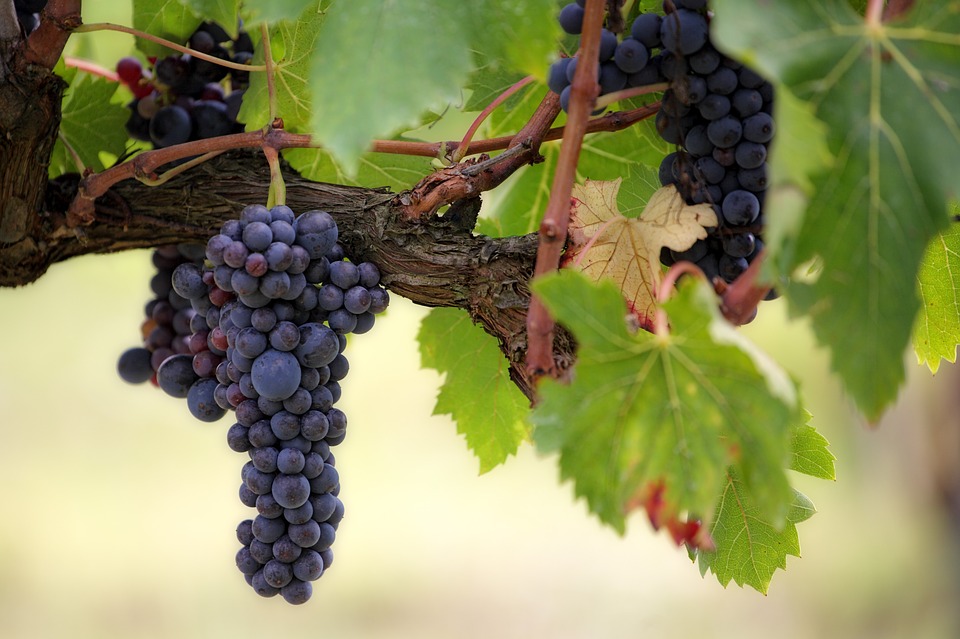It’s a sure bet that most Americans will be happy to ring out 2020 and toast to the new year, and California’s wine makers are likely to be among those proposing the toast.
The state’s vineyards and vintners faced challenges even before the start of what has turned out to be a record-breaking wildfire season, as the pandemic stalled tourism and cut off a key sales channel with the closure of restaurants around the country.
COVID-19 alone could cost the country’s 10,000 wineries and more than 8,000 wine grape growers an estimated $5.94 billion in lost revenue this year, according to a forecast by Jon Moramarco, managing partner of bw166 and editor of the wine industry publication the Gomberg-Fredrikson Report.
“It’s been very challenging this year,” said Gladys Horiuchi, media relations director for The Wine Institute.
The closure of restaurants meant many wine fans shifted their buying habits, opting to buy more wine in grocery stores and online for home consumption, she said. In response, some vintners added or expanded direct-to-consumer sales. Additionally, some wineries created virtual tastings, virtual vineyard tours and other events to promote their wines and generate sales.
All that innovation came before the start of a wildfire season that thus far has led to 31 fatalities and destroyed more than 9,200 structures, including some wineries.
The Wall Street Journal’s Lettie Teague reported last week on the owners of Hourglass Winery in Napa, much of which was destroyed in the Glass Fire, which was only expected to be fully contained this week after burning more than 67,000 acres in Napa and Sonoma counties.
Owners Jeff Smith and Carolyn Duryea plan to salvage the wine they can and rebuild, Teague reported.
Other Napa wineries were also damaged or destroyed during the Glass Fire, and many more could feel the lingering effects of smoke from that fire and others.
At one point in mid-September, more than 100 wildfires were burning in the nation’s west, bringing concerns about a condition called smoke taint that can make wine unpalatable, according to a report in Wine Spectator. Wineries affected by heavy smoke can send grapes to specialty labs to be tested, but smoke taint might not be obvious until grapes are fermented, a process that can release the smoky notes and render the wine inferior.
Some California cabernet makers told Bloomberg News earlier this month that they didn’t expect to produce any wine this year. And many around the region are just starting to assess the damage that could mount if fire-blackened vines need to be pulled up and replaced for the 2021 growing season.
But none of the wineries reported being down for the count. California’s wine growers are farmers, with a resiliency that helps them bounce back from setbacks, Horiuchi said.
And, while much of the coverage has understandably focused on the destruction from the fires and the potential for smoke damage to this year’s grape harvest, she and others in the industry worry California wine fans abroad might be getting the wrong idea.
Much of the harvest for white wine and pinot noir grapes had already been completed before the fires started, but other red wine grapes were still on the vines and subject to fire and smoke damage.
Volumes for some brands and varieties are expected to be lighter in 2020 because of damage, after two bountiful years. Vintners will protect their reputations by not putting out any inferior wines, but there will still be California wines this year, Horiuchi said.
Wine is made in 46 of the state’s 58 counties and, while Napa and Sonoma are the most famous, combined they only account for 11% of the total wine produced. The state’s wineries make up the world’s fourth-largest wine producing region and much of that production has been untouched by the fires, she said.
“California wine country is vast, it ranges from the Oregon border down to Mexico, and most of it’s not affected.”
Related stories:
- Things we miss: New interests, changing values amidst the pandemic
- How the pandemic is shaping home cooking trends
- How the specialty food industry is faring in the era of COVID-19
________________________________________________
If you enjoyed this article, you can sign up for Consumer Brands SmartBrief, FMI dailyLead or Restaurant SmartBrief to get news like this in your inbox. For even more great news content, sign up for any of SmartBrief’s 275+ free email newsletters today, free.
